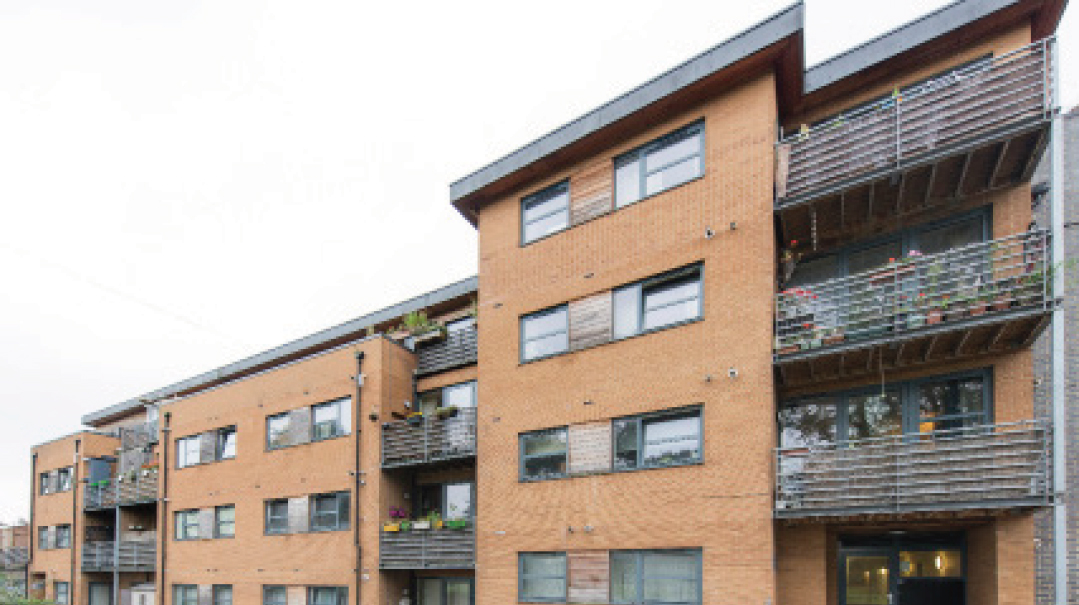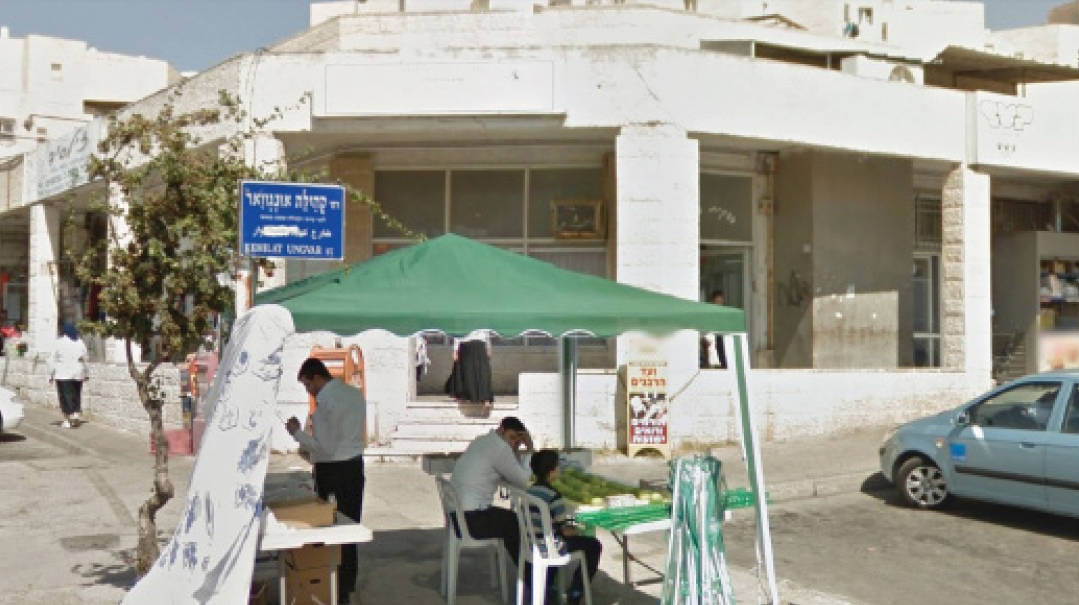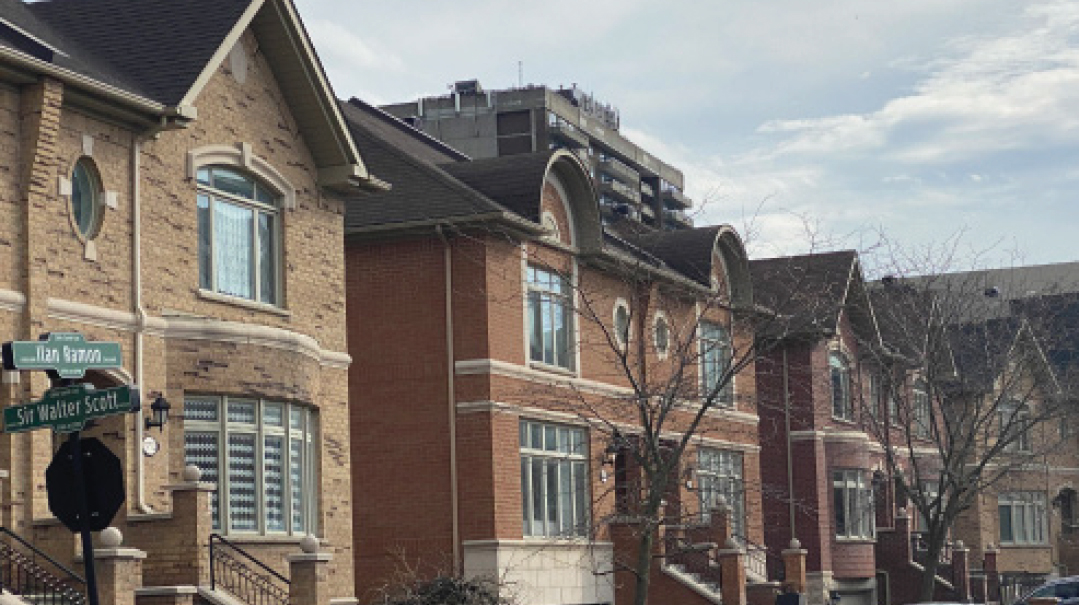The Doctor’s Still In
| April 5, 2020It was that underlying love of Hashem’s world that first brought Moshe Shmuel Rubner into the medical field

RUBNER HOUSE, Stamford Hill, London
Dedicated in memory of Dr. Moshe Shmuel (Paul) Rubner a’’h
Who Was Dr. Rubner?
Dr. Moshe Shmuel (Paul) Rubner was the Stamford Hill community’s beloved physician until his sudden death 13 years ago at age 57.
He was a man of few words, razor-sharp when he’d relay a diagnosis, but a truly gentle soul at his core, with a butter-soft personality beneath his stern demeanor.
“That tough outer layer was the only way he could remain standing on his two feet,” says his wife Aliza. “People didn't realize, but he was so fragile inside — he couldn't bear to see so much illness. He often told me that if not for his emunah and bitachon, he wouldn’t have been able to survive. He endured many sleepless nights over his patients' conditions.”
Of course you pulled your kids’ sticky fingers off the huge fish tank in the waiting room, prompted by that strict Yinglish note — “Nisht touchen und fingerpoken” — taped to it because, just as he cared profoundly for his patients, he cared for all of Hashem’s creations, including his gorgeous tropical fish collection, and he didn’t want the fish to be frightened by the incessant drumming of curious children.
It was that underlying love of Hashem’s world that first brought Moshe Shmuel Rubner into the medical field. Young Moshe Shmuel had been learning under Rav Yehuda Zev Segal ztz’’l, the Manchester Rosh Yeshivah, for two years, when he told his rosh yeshivah that he wanted to become a doctor. He had chanced upon a biology book and was fascinated. He quoted Shlomo Hamelech — “Mibesari echzeh Elokim, from my body I can see Hashem’s greatness” — and asked the Rosh Yeshivah for a brachah, but Rav Segal at that point didn’t agree.
“Nein,” declared Rav Segal, “Host a gutte kop, bleib doh. (No, you have a good head, stay here.)”
But, as Rav Segal already knew, Moshe Shmuel Rubner was as determined as they came. A few years earlier, after the 1956 Hungarian Revolution, he and his parents had found refuge in London. The young boy didn’t know a word of English when he arrived, and to make matters more difficult, his father passed away, leaving his mother the sole breadwinner. But confused and broken as he was, he plowed through school and succeeded, eventually becoming one of Rav Segal’s prized talmidim.
But the call of medicine tugged at his heart, and in the end, he did apply to a medical school track. Given his humble yeshivah education, though, he was rejected. Unfazed, he decided to attain a degree in electrical engineering in order to maximize his chances, and after three years of study and a degree in hand, he reapplied to medical school and was accepted.
Several years later, on a Motzaei Shabbos, the newly qualified doctor got a call. Rav Segal was in London for a Shabbaton and he was not feeling well at this late hour. A talmid accompanying him remembered that their former yeshivah buddy had become a doctor, so they tracked him down and asked if he could perhaps make a house call.
“My husband hurried out the second after Havdalah and stayed with the Rosh Yeshivah the entire night,” remembers his wife Aliza.
A few days later, the recovered Rosh Yeshivah came with an entourage to visit Dr. Rubner in person, telling him, “Yetzt geb ich dir a brachah (Now I’ll give you a brachah!”)
Indeed, top medical professionals accepted Dr. Rubner’s word as their command and were often astounded by his fast and precise diagnostic abilities. He could generally assess a situation at a glance; when he scrutinized a patient for a bit longer, it often meant something was wrong. Perhaps that siyata d’Shmaya could be credited to a brachah he received from the Zvehiller Rebbe after his marriage, while he was still in medical school. On a trip to Meah Shearim, the Rebbe asked what brachah he’d like.
“That I should never make mistakes,” stated the prudent medical student.
His motive was not money or fame, but a genuine longing to live a life of virtue and guide people toward health.
“We never had a Rolls-Royce outside our house. In fact, the first five years of his practice we couldn’t even afford to pay rent, so our family of four at the time squeezed in with my mother-in-law, and the clinic was in the dining room. When male patients would come, my mother-in-law, my girls, and I would squeeze into the tiny, standing-room-only kitchen. Eventually we moved across the street.”
Dr. Rubner had a unique rapport with his patients, both young and old. Because the waiting room in his home was small and claustrophobic, on hot days, before air-conditioners were the norm, he’d send his children to the grocery to buy the junior patients ice-pops. When rabbanim came, he’d ask permission from the others in line if they minded that he see the talmidei chachamim first. He also had a successful rapport with the emotionally unwell, who can often be obstinate about treatment, somehow getting them to listen to him and take their medications.
One day, one of those patients called Aliza and said, “Why is your husband pacing outside my house?” Aliza threw the question back to her, asking why, indeed, he was outside her house. “Well,” the woman answered, “he wants me to check into the hospital.”
Dr. Rubner, says his wife, wouldn’t rest until he knew a patient’s medical situation was sorted out. One Erev Shavuos, a patient came in with cold symptoms, but Dr. Rubner was concerned that the condition might develop into pneumonia during Yom Tov. So after davening that evening, Dr. Rubner went to his house with a package of antibiotics, urging his patient to take the medicine even though he didn’t yet have fever. It was pouring rain that night, so when the dripping-wet doctor arrived at the shocked family’s door, they graciously invited him in, but he refused, saying he didn’t want to wet their floor. He stood out in the rain, stuck out his hand, delivered the goods and left.
If he was particularly anxious about a patient, he’d put money in the Rabi Meir Baal Haneis tzedakah pushke and say to Rabi Meir aloud, “Please be a meilitz yosher for me.” It’s easy to understand why people felt secure in his care.
It was the 3rd of Elul, the night of the Rubners’ 25th anniversary. Dr. Rubner was taking a partial summer vacation, but he still maintained his night clinic at home, where he often saw patients into the wee hours. Aliza woke with a start at dawn, realizing she hadn’t heard him come upstairs. She went downstairs, walked through the empty waiting room and into the office, and found her soul mate slumped in his chair, lifeless.
“He had misas neshikah, a painless death,” she says. “There was no evident panic or pain. He had his phone near him, he could have alerted me or called Hatzolah had he been concerned. His last patient’s notes were open in front of him. That patient later shared that, contrary to his usual reserve, my husband schmoozed with him all about our recent trip to the States from where we had returned just three days earlier.”
Every summer the family traveled to Eretz Yisrael, but that summer, Dr. Rubner said he wanted to go to America to visit his elderly relatives, since, as he put it, “I don’t know when I might see them again.”
On that trip, Dr. Rubner visited the Skverer Rebbe, also known for his medical expertise. Dr. Rubner made a deal with the Rebbe: “I’ll supply the medicine, you give me the brachah — and together we’ll achieve!” A week later, the size of his huge levayah on a busy Erev Shabbos was a clear demonstration that he had already achieved so much.
What’s in a Name?
A social housing development in Stamford Hill built by Agudas Israel Housing Association (AIHA) was named Rubner House in tribute to Dr. Rubner, although Mrs. Rubner says she had no prior knowledge of the plan. One day, Mrs. Ita Cymerman, director of AIHA, called up Aliza Rubner to say she would be naming the new apartment block “Rubner House” and wanted to honor the Rubner family with the kvias mezuzah.
Rubner House is a 17-unit apartment complex nestled on a quiet edge of Stamford Hill, overlooking expansive green parklands. It affords families outdoor space and room to play and flourish, as the assortment of bikes and balls strewn about outside indicate.
“I felt so connected to the idea,” Mrs. Rubner remembers, “because my husband always cared for families who couldn’t afford housing. I have no doubt that when my sons and sons-in-law knocked those nails into the mezuzos, he looked down and thought, ‘Well done!’ I believe the families living there are still benefiting from his care. In the same way, I feel that he’s still at my side, and still advocating in Shamayim for the kehillah he so loved. I have seen so much siyata d’Shmaya since his passing — for example, his clinic wasn’t sold to some pub or church, but to a girls’ seminary whose annual graduation I’m invited to every year.”
Aliza made aliyah a year ago, to be near her children and grandchildren, but whenever she visits London, she makes sure to drive by Rubner House… and the seminary.
Notable Naming
London’s first Hatzolah ambulance, H1, is dedicated to the memory of Dr. Rubner.
Oops! We could not locate your form.










